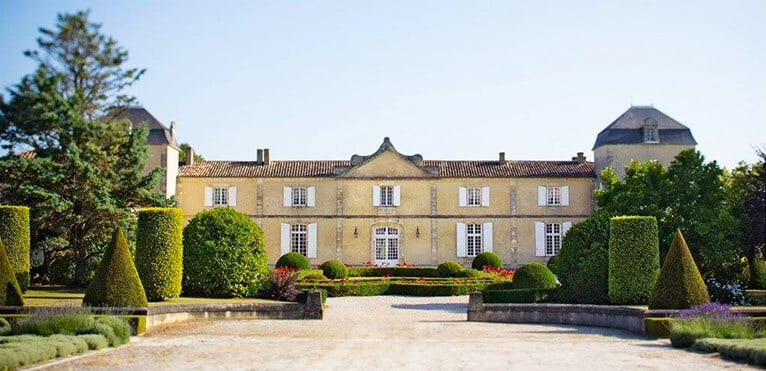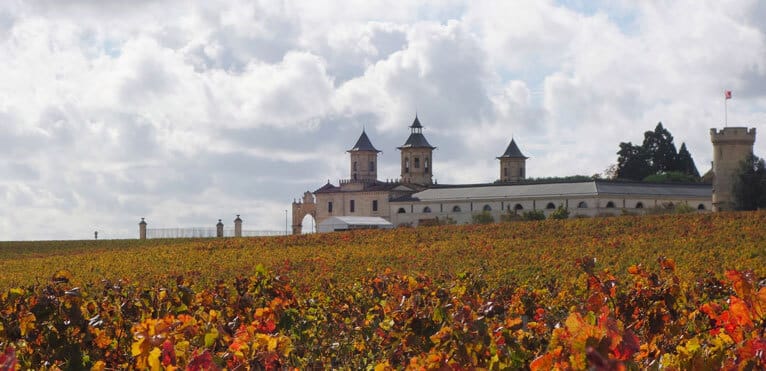
Contents
Château Calon-Ségur
Located at the northern tip of the Haut-Médoc, theSaint Esthèphe appellation covers 1,230 hectares on a plateau overlooking the Gironde, separated from the Pauillac appellation by a stream. Benefiting from a mild climate, the appellation rests on a gravelly soil (small pebbles) with slightly more clay than in other Bordeaux appellations. There are many châteaux in Saint Estèphe. Let’s discover 3 of them, present in the 1855 classification.
Chateau Calon-Ségur
A wine producer since the 12th century, Château Calon-Ségur is a classified third growth. Originally named Calon de Saint Estèphe, after the small boats used in the Middle Ages to transport wood between the two banks of the Gironde, the Château owes its full name to Nicolas-Alexandre de Ségur (also owner of Châteaux Lafitte and Latour). He used to say: “I make wine in Lafitte and Latour, but my heart is in Calon”, which explains the heart on the wine label.
On a surface area of 55 hectares planted mainly with Cabernet Sauvignon, with vines averaging 40 years old, the Château produces 3 wines, all traditionally aged in barrel. The Grand Cru is refined, with pure, noble aromas, and there is a2nd wine (Marquis de Calon Ségur) and a wine made from young vines (Saint Estèphe de Calon Ségur). A vast vineyard restructuring program aims to have the vineyard planted to 70% Cabernet Sauvignon (compared with 56% today) by 2032.
Château Montrose
Created in 1815 and classified as a second growth, it is one of the youngest and most famous crus classés. Château Montrose owes its name to the colors of the flowering hill on which the vineyard is planted (stretching all the way to the Gironde), with 60% Cabernet Sauvignon and 32% Merlot.
The Grand Cru is aged for 18 months in oak barrels, using the esquive racking method (which consists of separating the wine from the suspended lees several times) and traditional fining (using egg whites). We also produce a second wine, La Dame de Montrose, and a3rd wine from young vines, Tertio de Montrose. The 1921 and 2009 vintages, for example, are considered “legendary wines”.
When Martin Bouygues bought the estate in 2006, a more sustainable approach was adopted, with the use of geothermal energy to regulate the cellars and stainless steel vats, and the installation of photovoltaic panels.

Château Cos d’Estournel
Château Cos d’Estournel
Created in 1811 by the Marquis d’Estournel and classified as a Second Growth, it is renowned for its exceptional cellar, dating from 1830 and decorated with Chinese pagodas and a carved door imported from Zanzibar.
The 100 hectares of vineyards produce a fine, well-balanced Grand Cru, as well as a second wine (Les Pagodes de Cos, in red and white), a3rd wine since 2005 (Cos d’Estournel Blanc) and Goulée by Cos d’Estournel, renamed G d’Estournel in 2009. The gravity-fed vat room (no pumps and elevator system), installed in 2008, has made the Château a forerunner in the region. COS100, a unique and rare wine, consolidates the estate’s prestige. Produced from grapes from the “Parcelle des Femmes”, planted by women winemakers during the First World War, and made exclusively from Merlot from the 2015 harvest, this confidential wine (with only 2 barrels harvested) reflects the Château’s avant-garde philosophy.
Discover the prestigious châteaux of Saint Estèphe.
Photos by Château Calon-Ségur / Château Cos d’Estournel